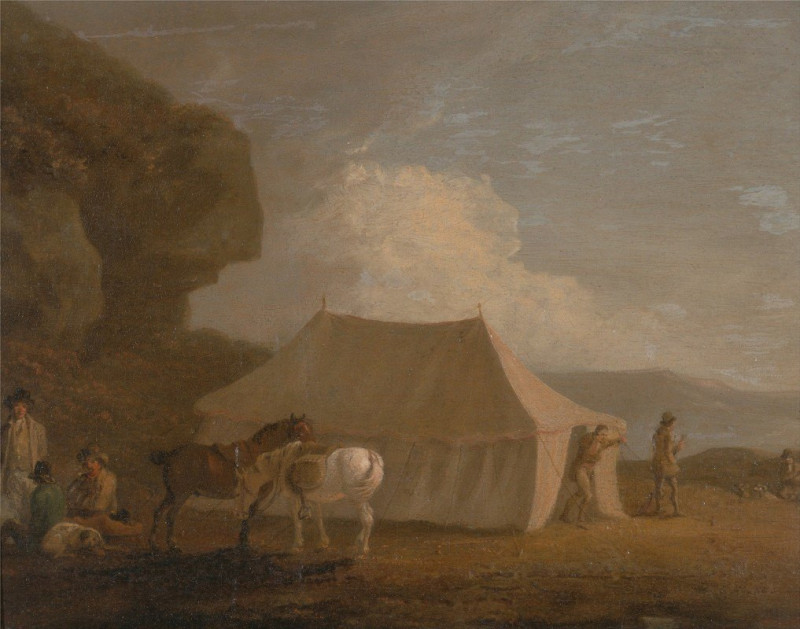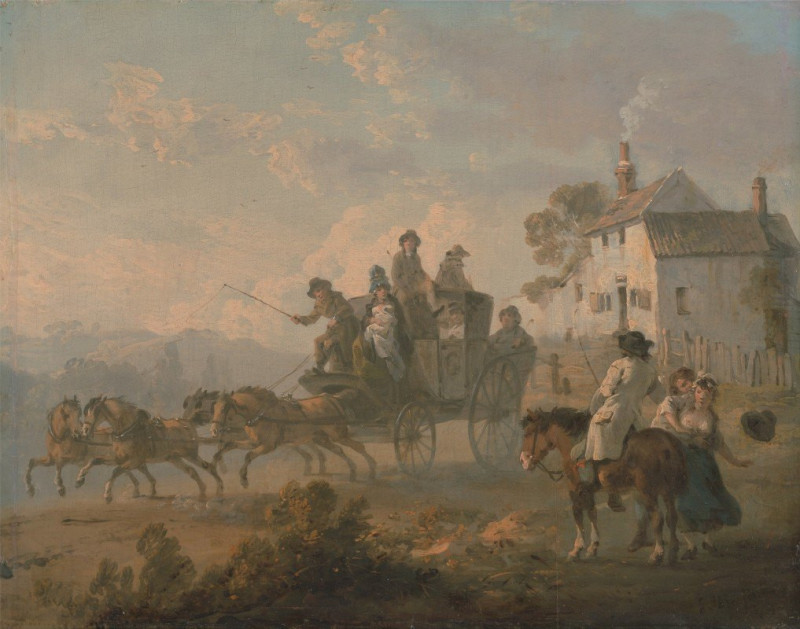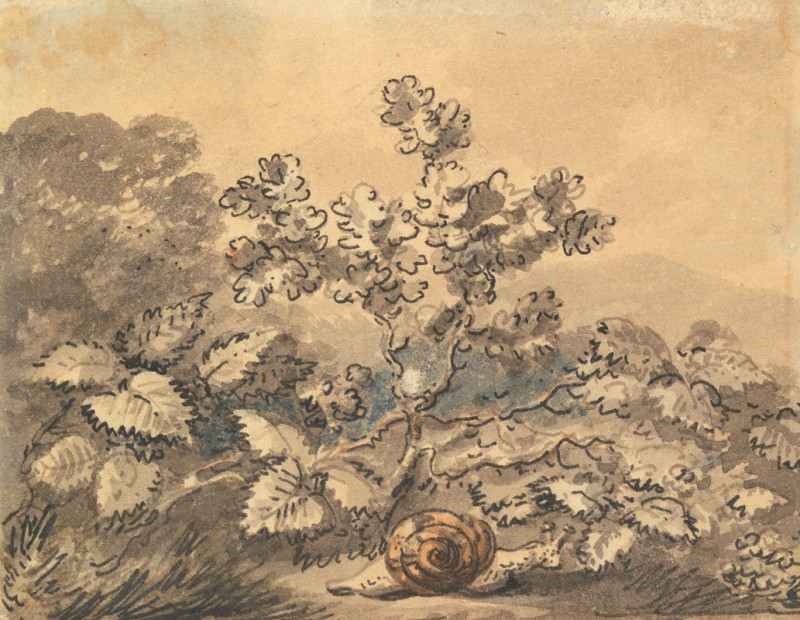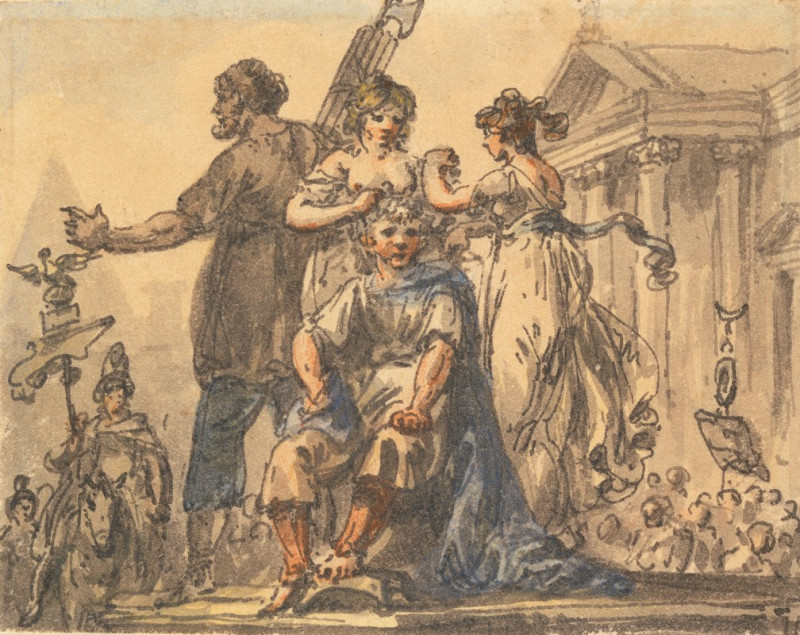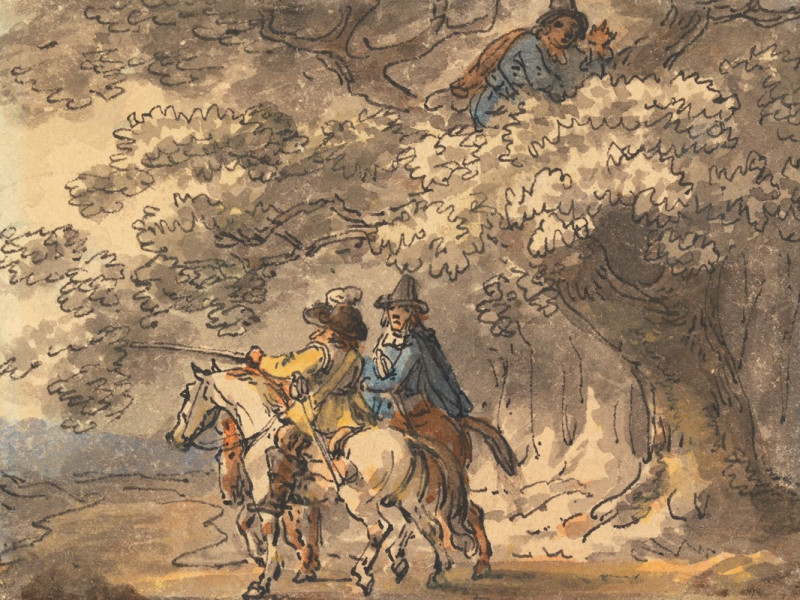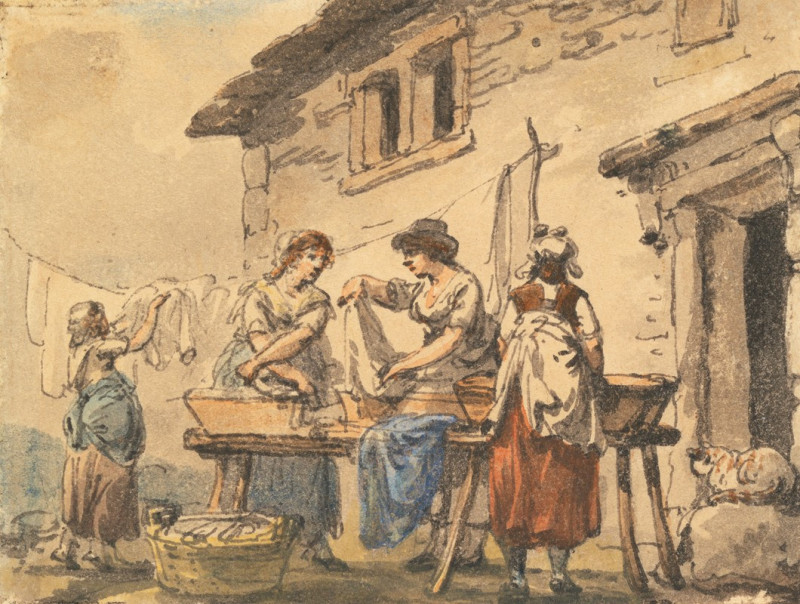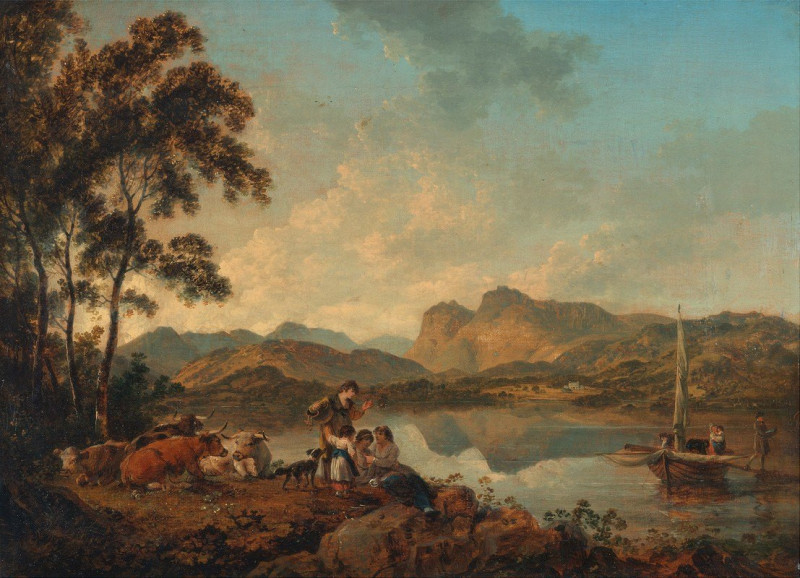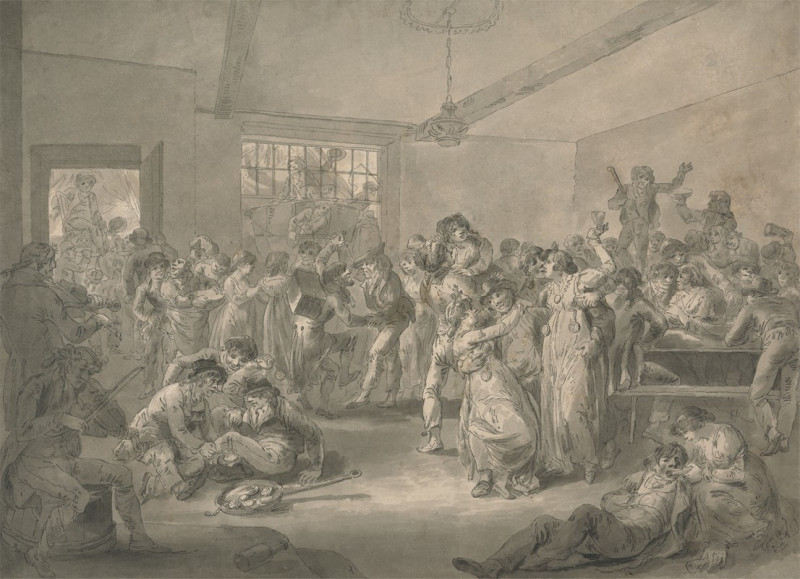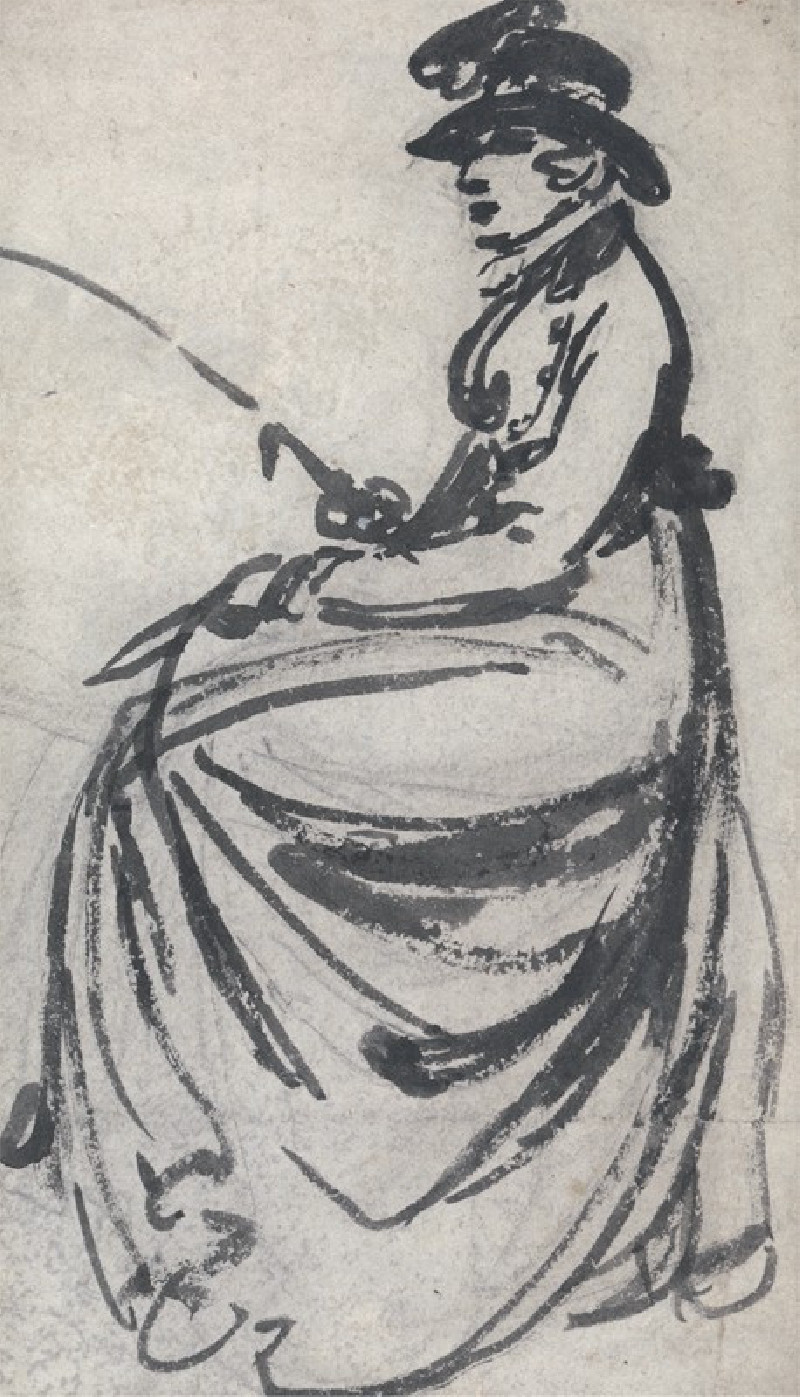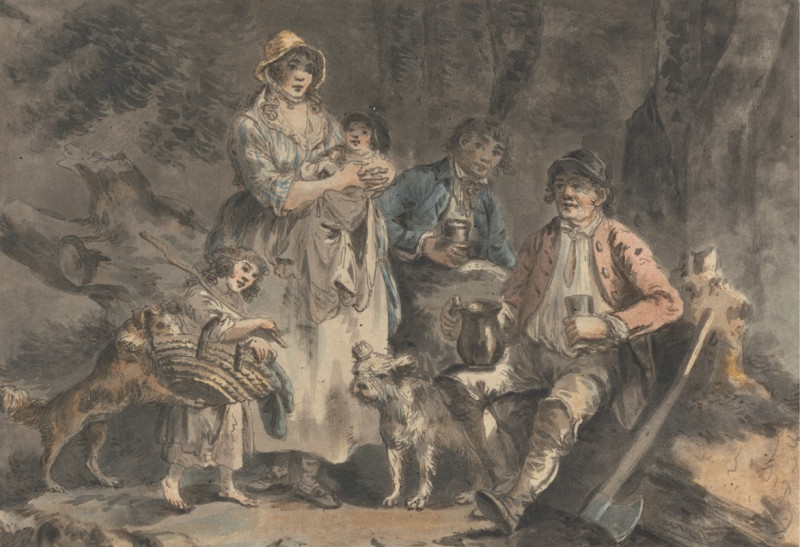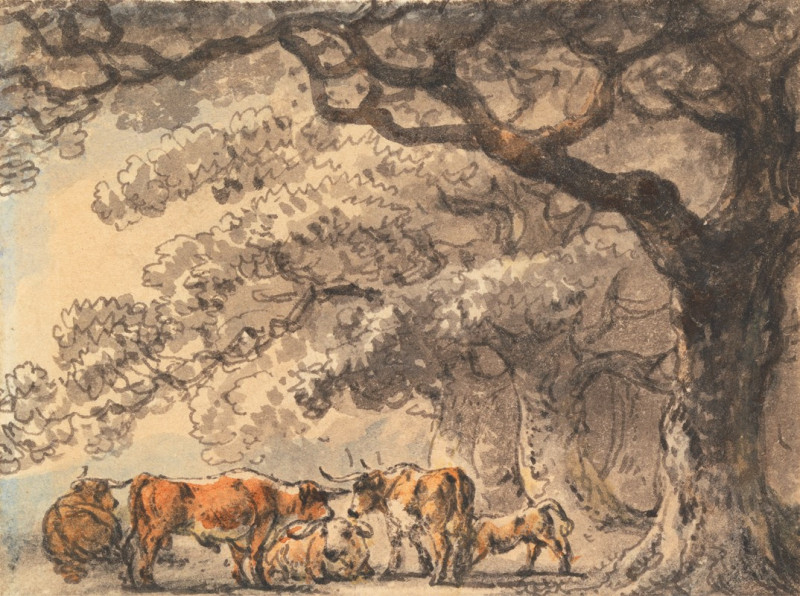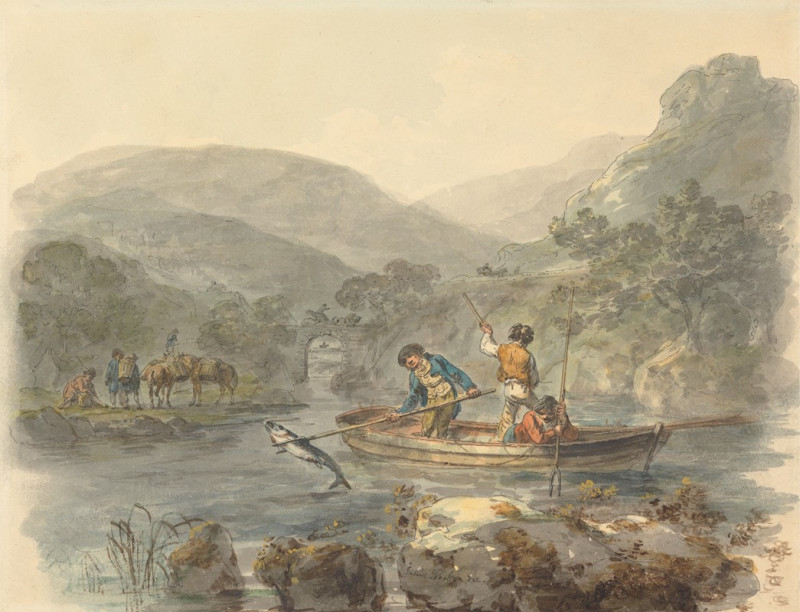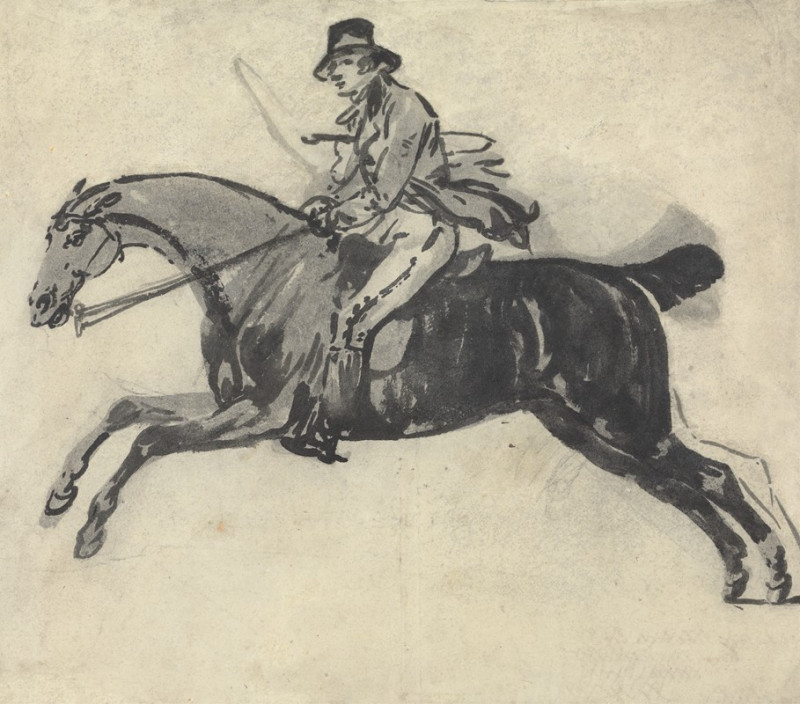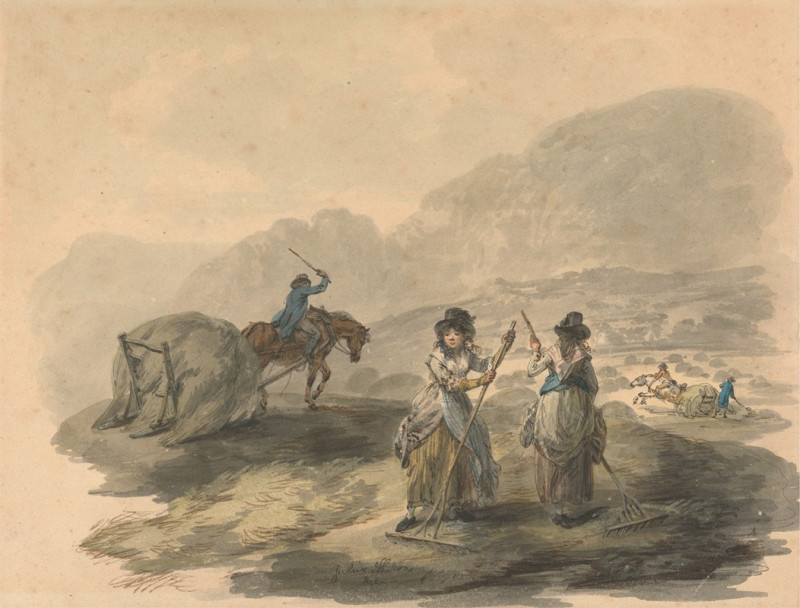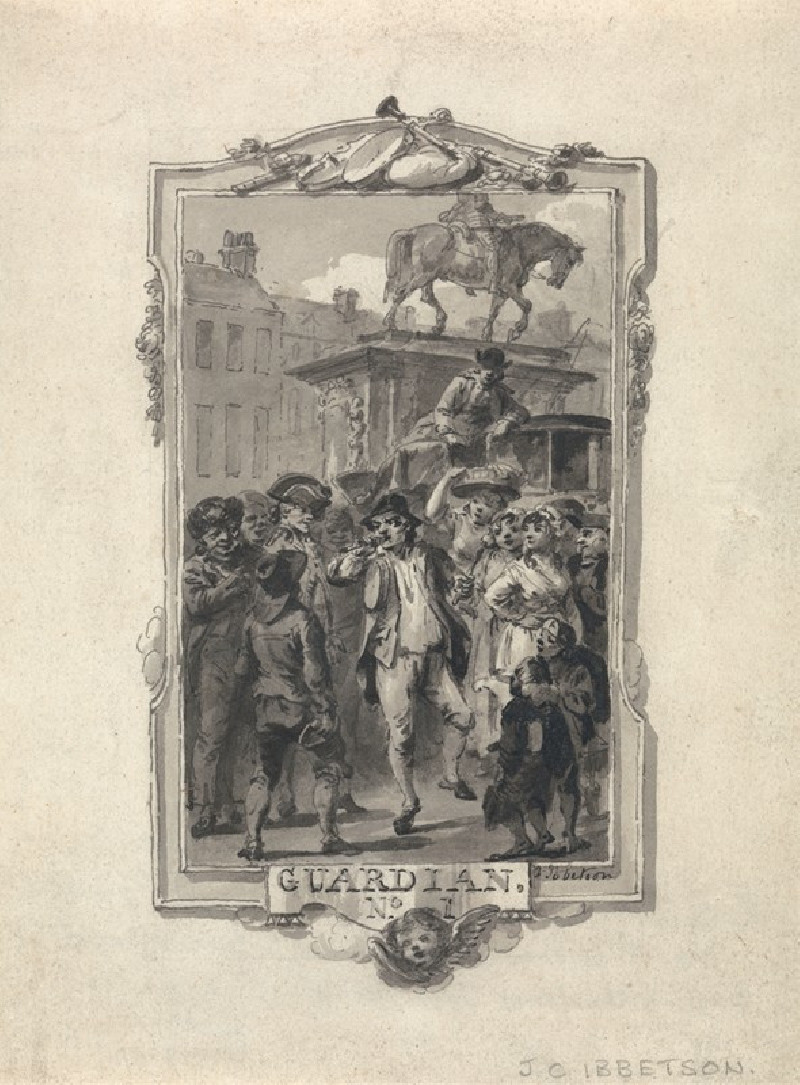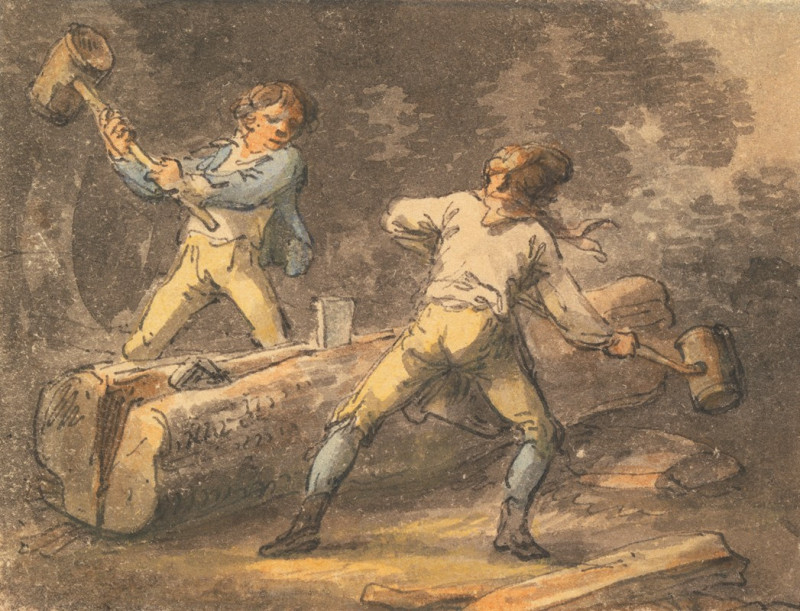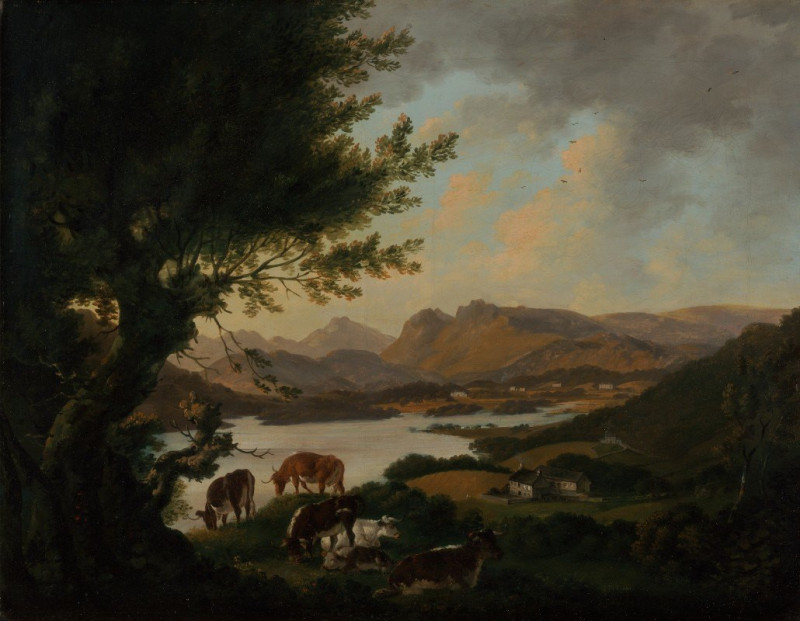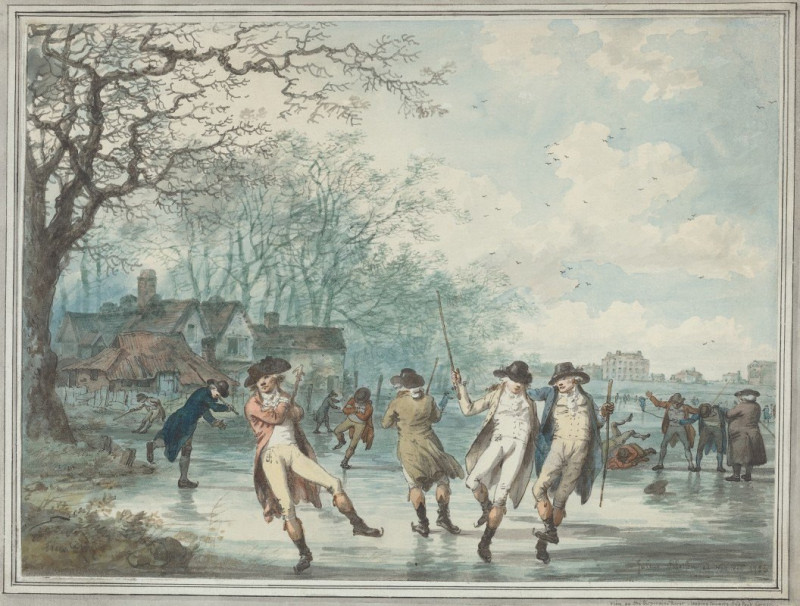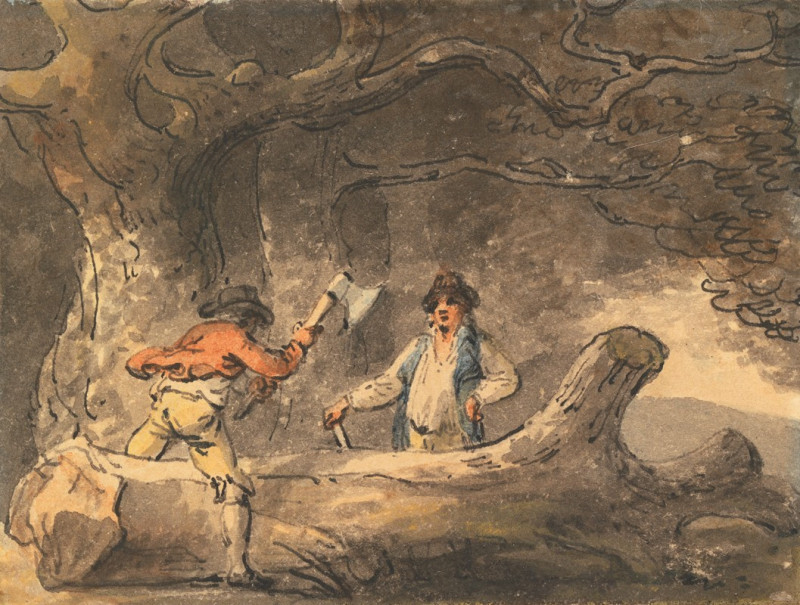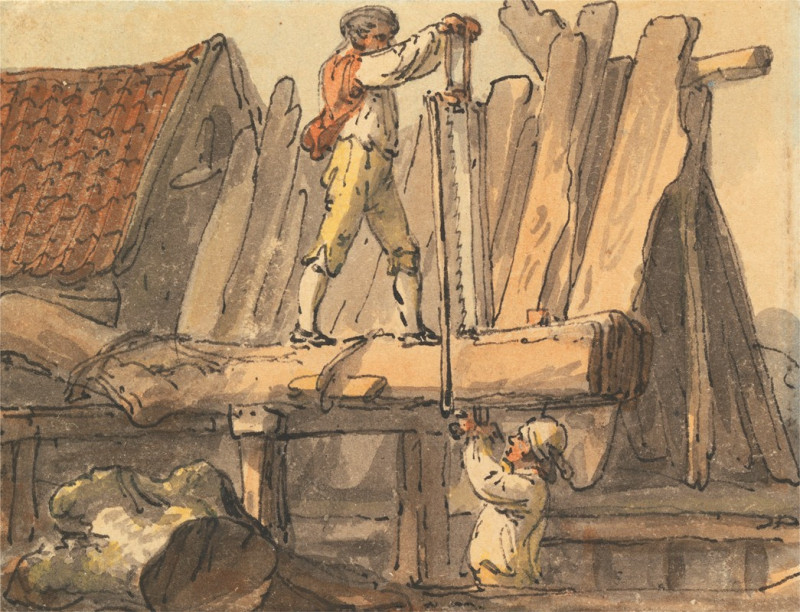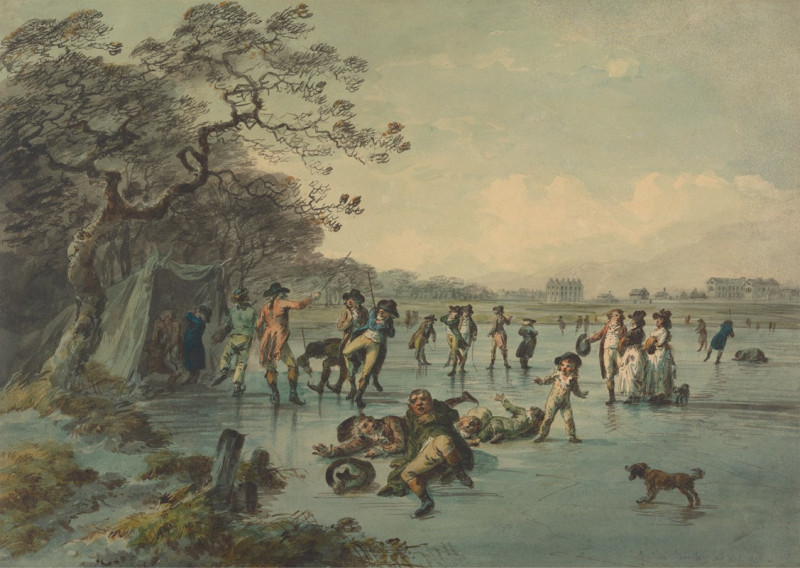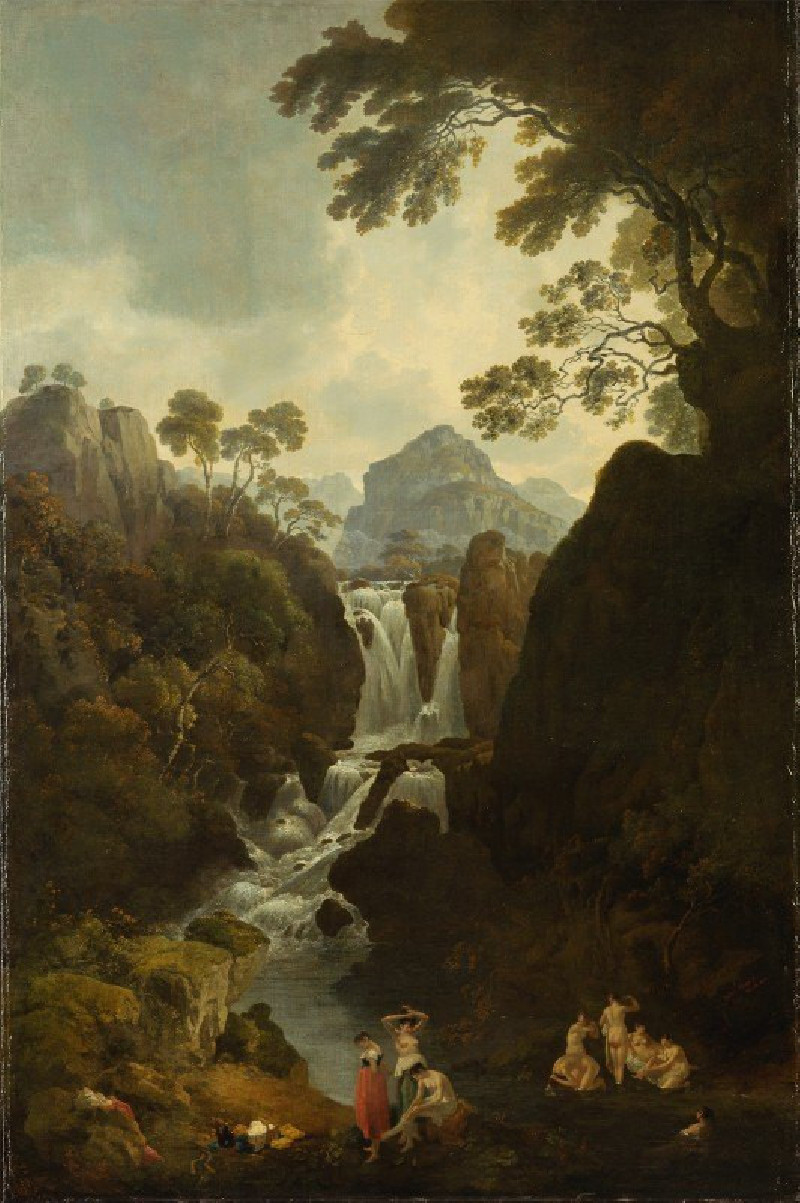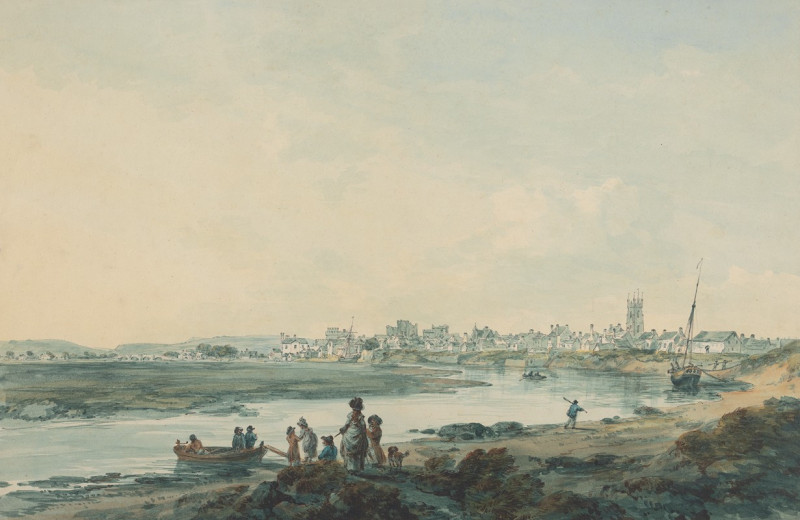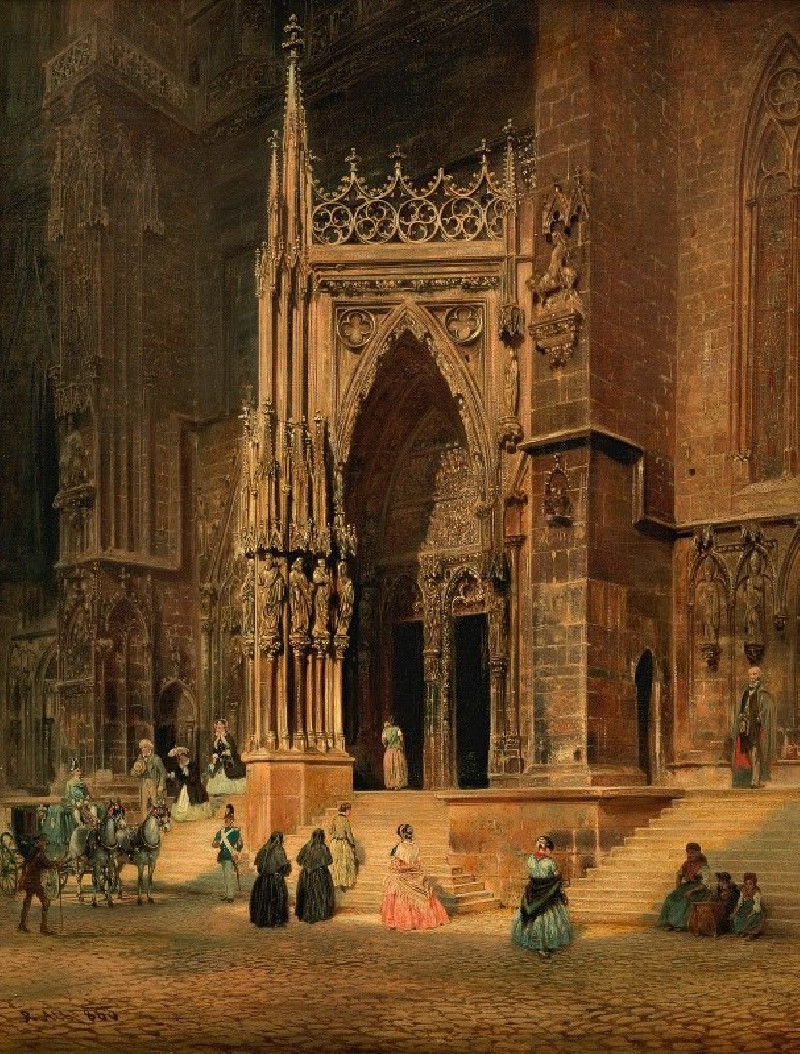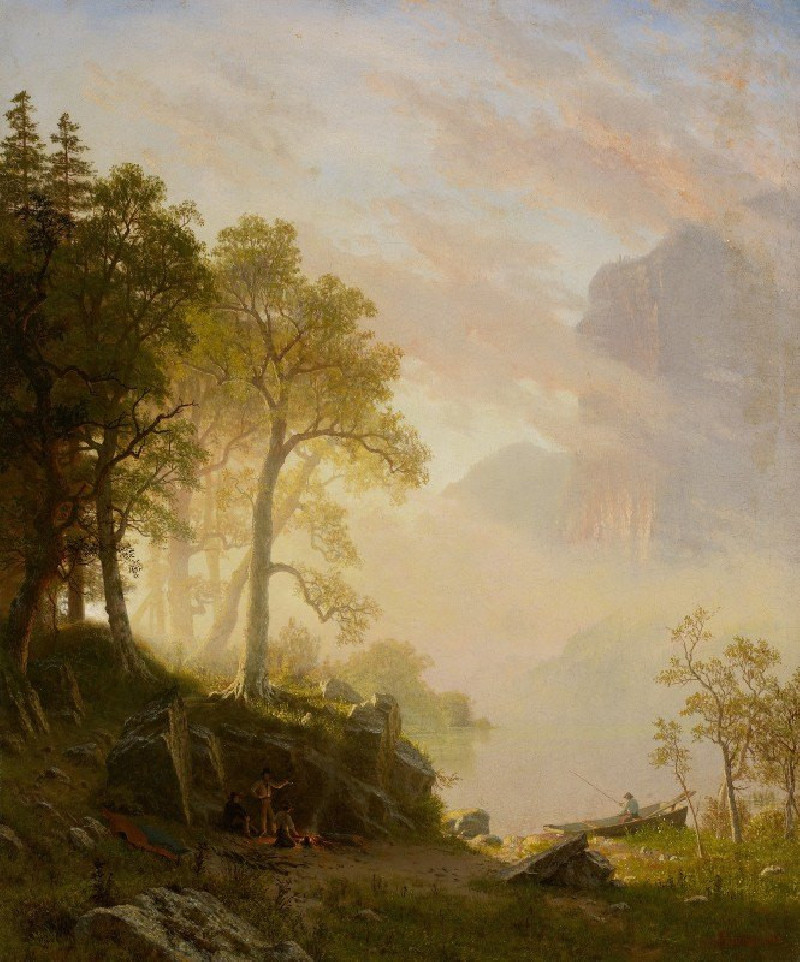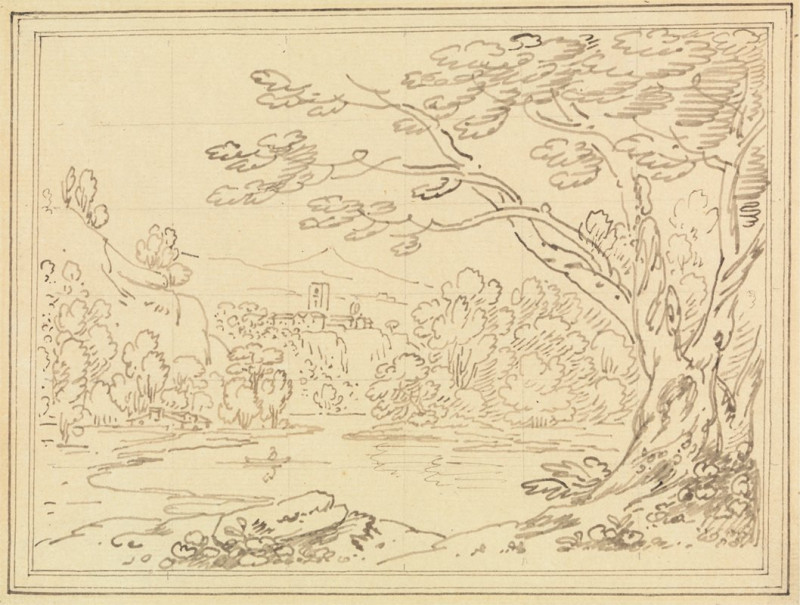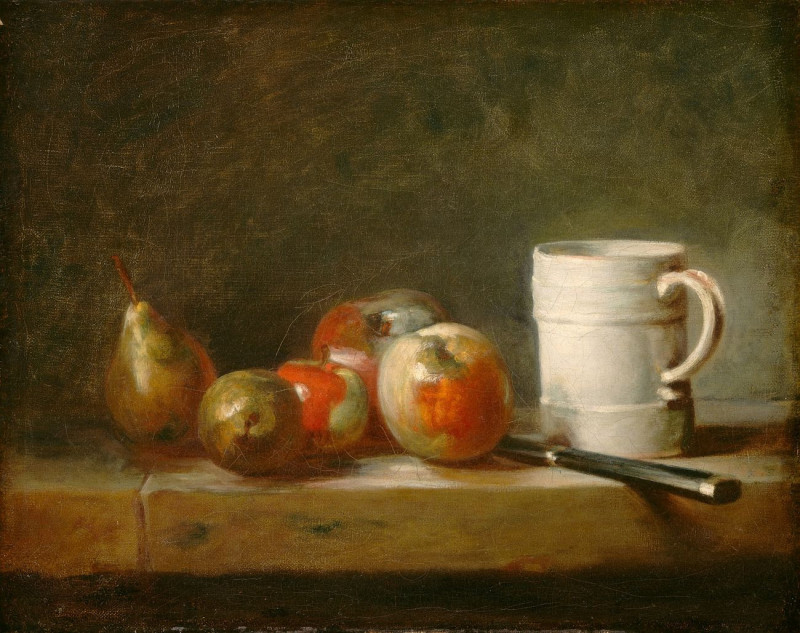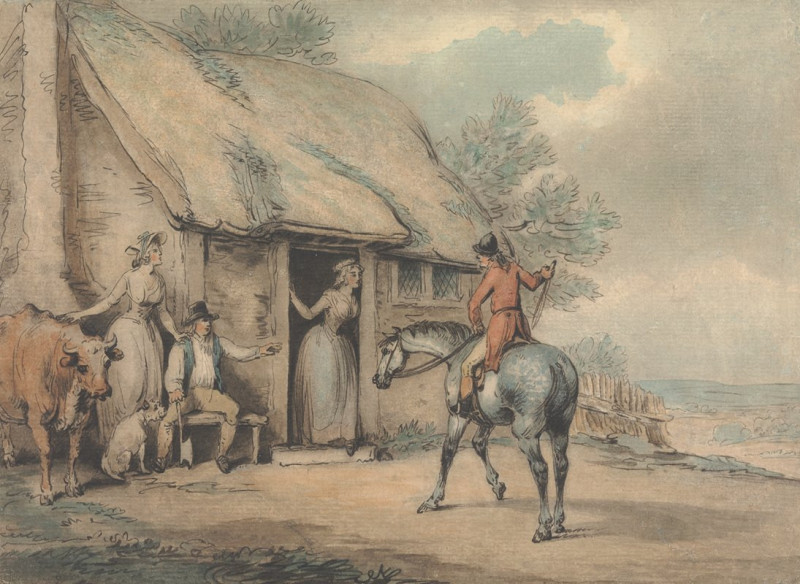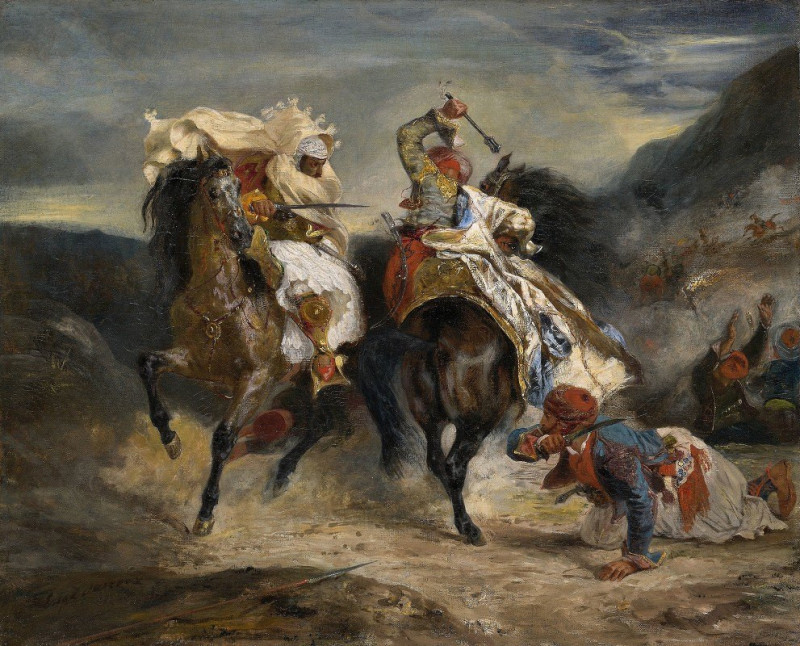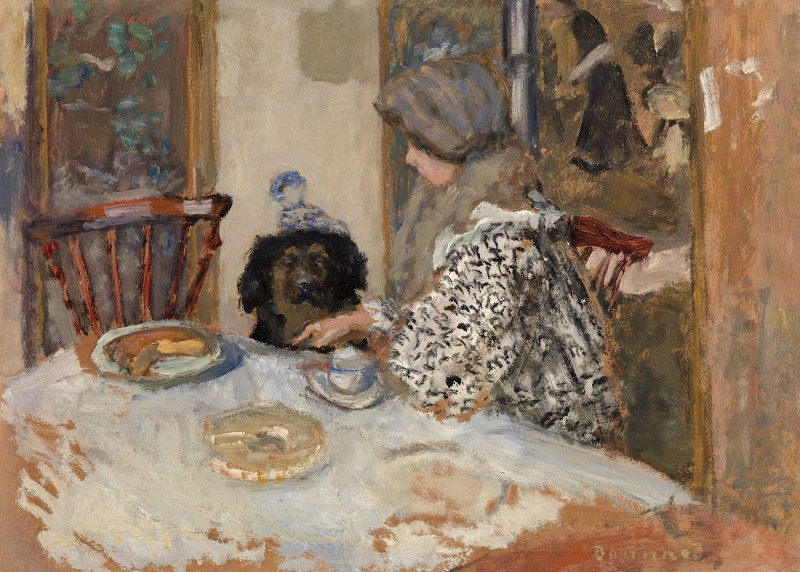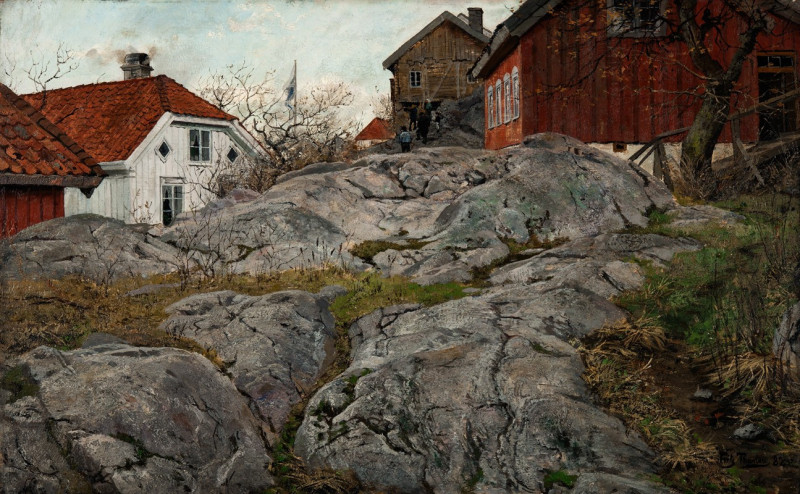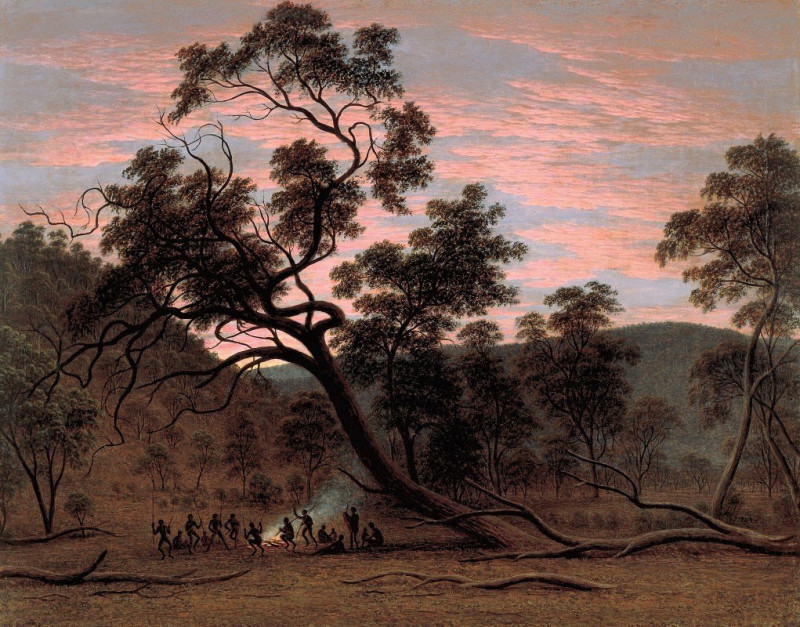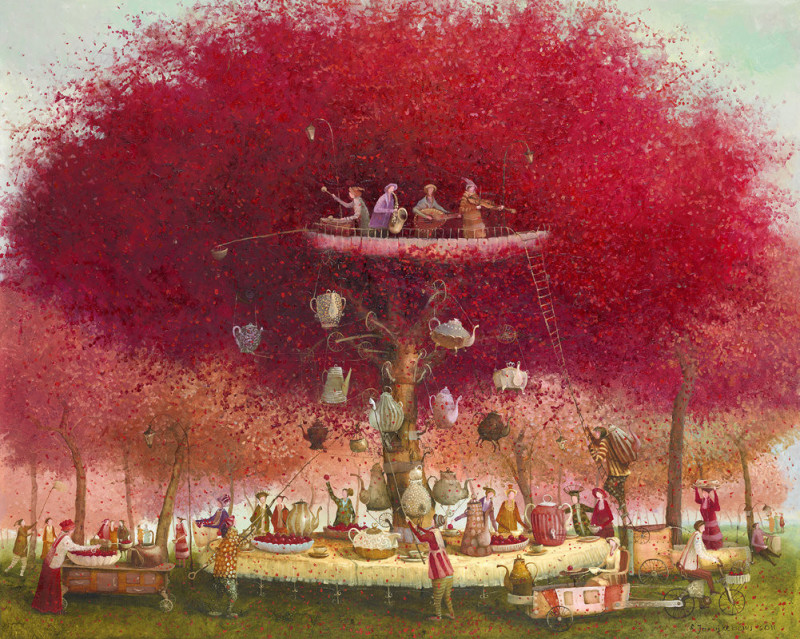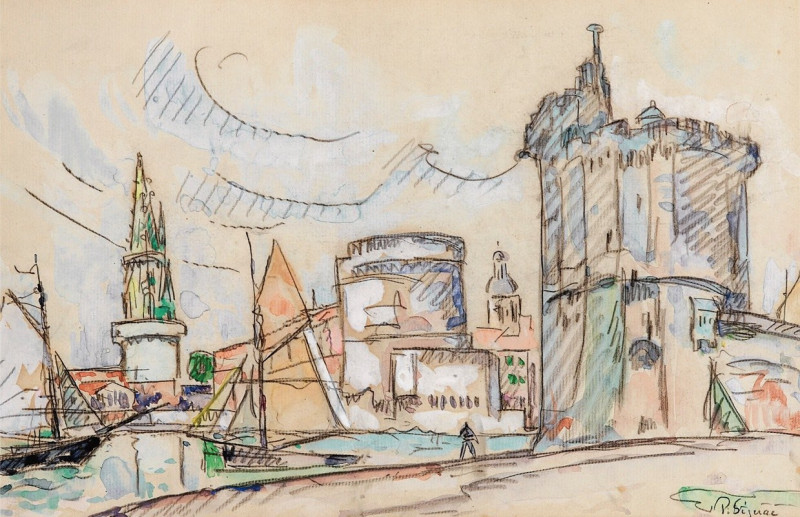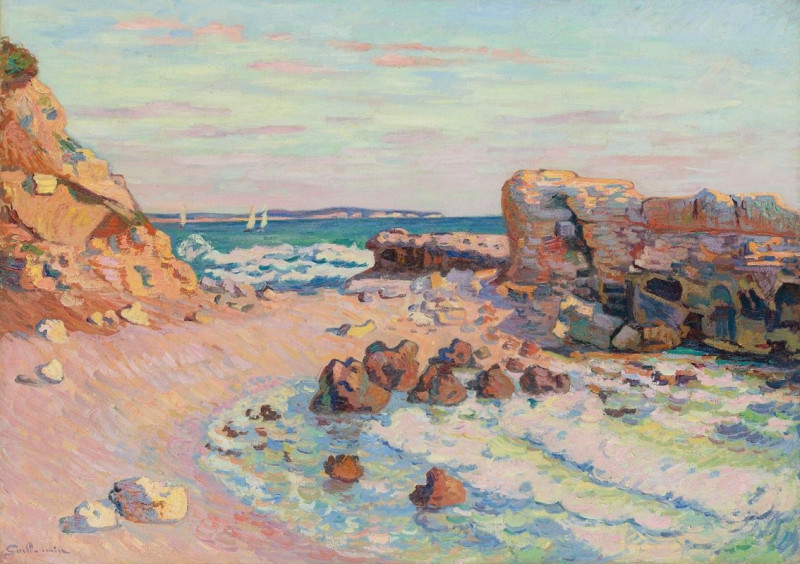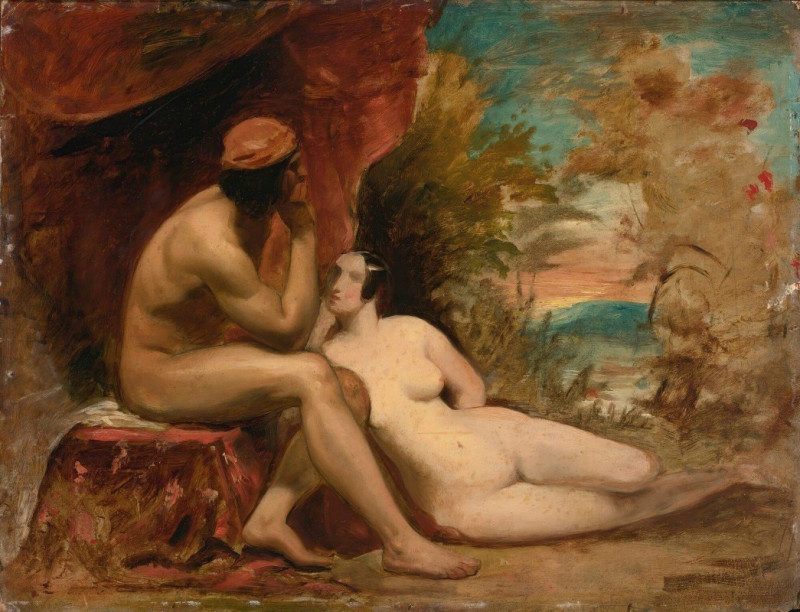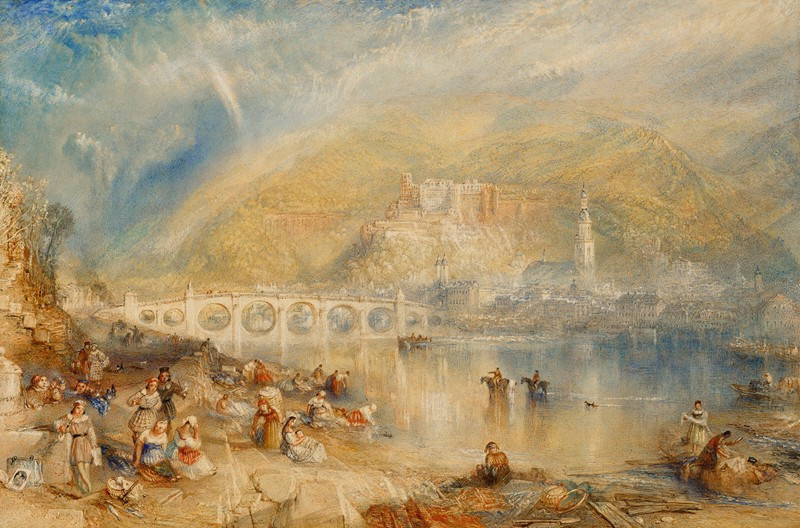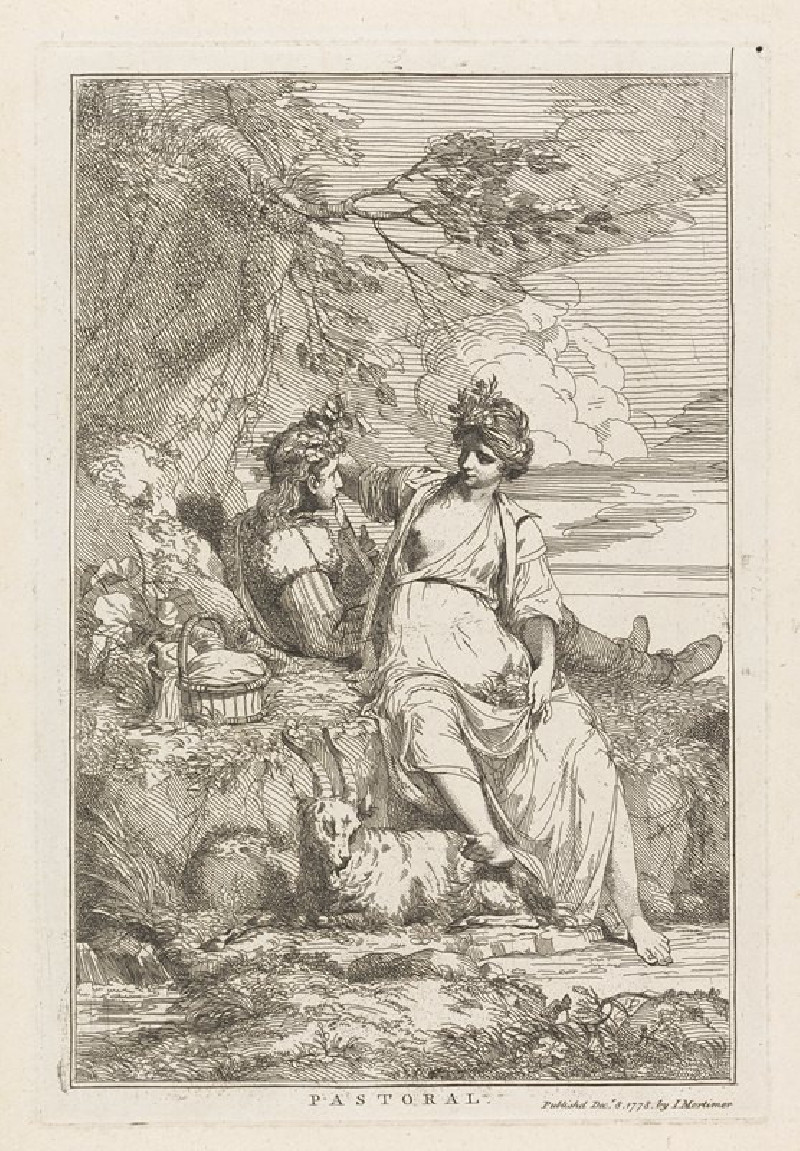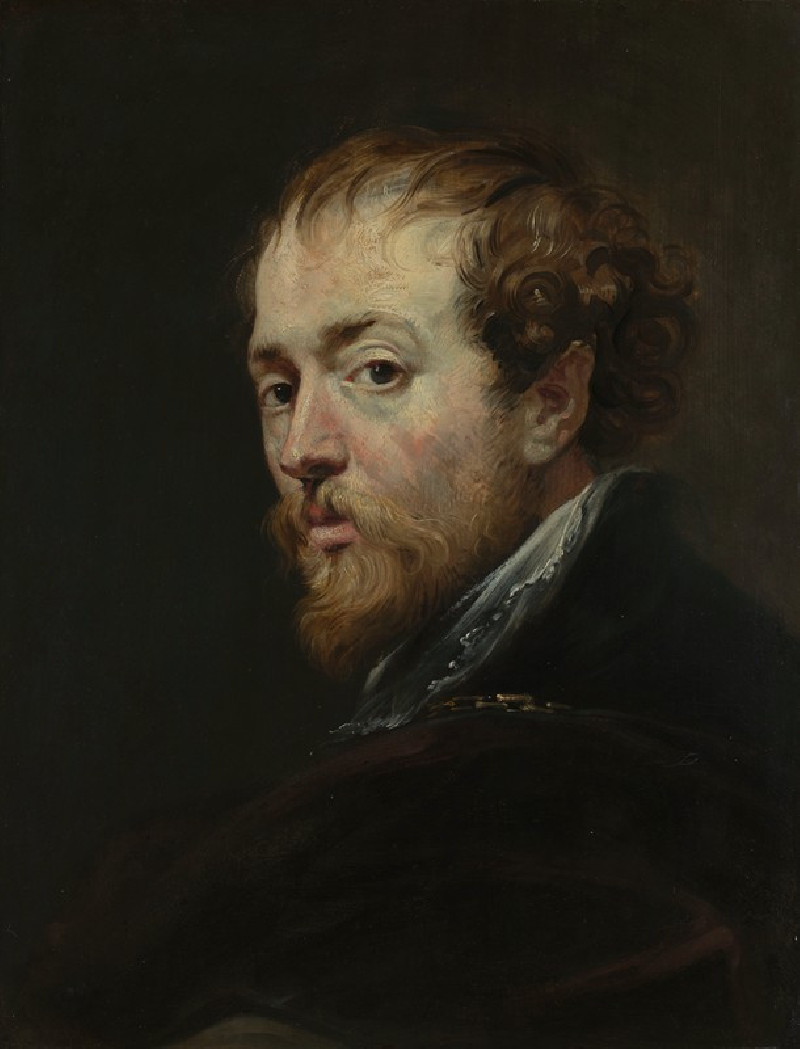The Shooting Party (ca. 1800)
Technique: Giclée quality print
Recommended by our customers
More about this artwork
Welcome to a glimpse into the pastoral world of Julius Caesar Ibbetson's "The Shooting Party," a captivating painting from around 1800. Here, Ibbetson portrays a serene yet invigorating scene of leisure in the British countryside, a popular subject during the period that reflects the social and recreational activities of the British gentry.At the heart of the painting is a large, white tent, set up on an open plain, likely serving as a temporary lodge for the gentlemen shooters. The canvas glows a soft white, catching the gentle light of an overcast sky, which is masterfully rendered in shades of blue and grey that convey a cool, breezy day.To the left, several figures interact near a pair of horses and a dog, suggesting the camaraderie and preparation involved in such an outing. One horse appears to be laden with supplies or perhaps game from the hunt, emphasizing the success and abundance associated with these shooting events. Nearby, individuals, possibly servants or fellow sportsmen, converse and handle equipment, adding to the vivid narrative of rural sport and assembly.The setting is calm yet filled with subtle activity, each element—from the figures to the animals to the distant rolling hills—harmonyously contributing to an atmosphere of genteel outdoor adventure. Ibbetson’s use of muted earth tones, along with carefully placed highlights, reflects the natural beauty of the English landscape and the leisurely pace of life away from urban centers."The Shooting Party" not only captures a moment of social sport but also echoes the British appreciation for rural landscapes, sporting culture, and social gatherings.
Delivery
Returns
Julius Sergius von Klever was a Baltic German landscape painter.
His father was a chemist who taught pharmacology at the Veterinary Institute. He displayed artistic talent at an early age and took lessons from Konstantin von Kügelgen. After completing his primary education, was enrolled at the Imperial Academy of Fine Arts where, at his father's insistence, he studied architecture. After a short time, however, he began to take landscape painting classes; first with Sokrat Vorobiev, then Mikhail Clodt.

